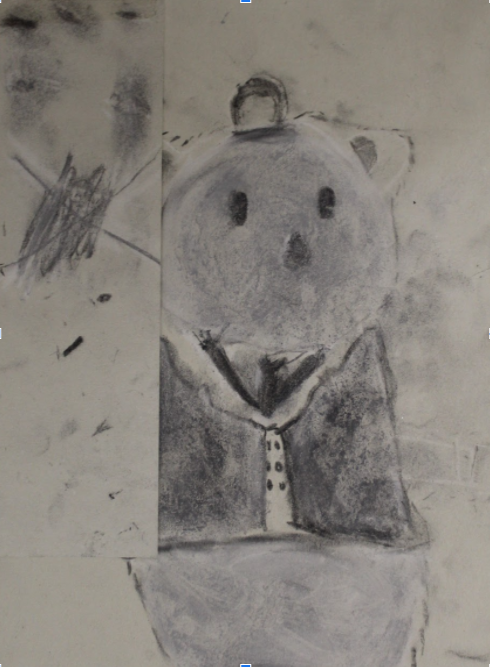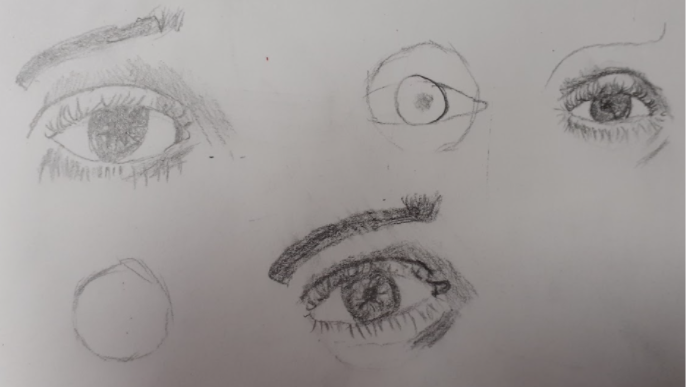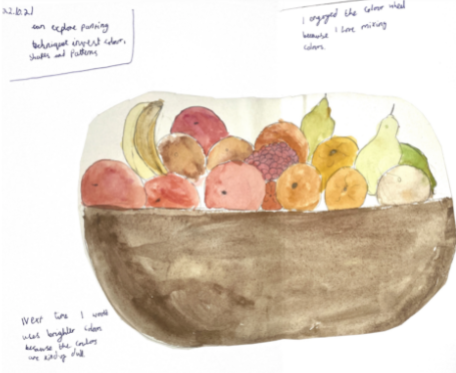Art and Design
“Every child is an artist; the problem is staying an artist when you grow up.” - Pablo Picasso
Subject Leader: Justine Ahmed
Link Governor: Dave Pamphilion
At Christ Church, we aim for all children to enjoy Art and Design. We aim to inspire and excite students' experience in Art and Design by providing a scaffolded, sequenced curriculum. We believe that Art and Design provides great opportunities for taking risks and exploring, supporting children to reflect and improve over time. We encourage children to think about the process they have gone through to get to their final piece and not just the final product.Our children love the freedom to be creative and explore a wide range of media. The children develop their style and imagination by exploring the visual, tactile, sensory qualities of materials and processes, discuss their own work, and that of their peers by making references to artists that have inspired them.
Art is taught by the class teacher in our school. It is a practical lesson with a focus on exploring and building skills before applying these to create pieces of work. The artwork is predominantly recorded in a sketchbook where possible, providing a portfolio of the childrens’ work from Year 1 - Year 6.
Children learn the skills of reflecting and evaluating their work and that of others, discussing ways that they could improve it.They learn to adapt and improve their artwork, thinking about the purpose and audience.
We pride ourselves on giving children real-life experiences and a broad range of stimuli to inspire them.
The curriculum is designed around the key areas; painting, drawing, printing and sculpture which are revisited and built upon. The curriculum is planned with a focus on skill, each unit relating to the topics.
What Children Learn
Drawing
In the Nursery, the children regularly explore a range of tools in order to mark make. As the children begin to ascribe meaning to the marks they make they are also beginning to choose appropriate tools and colours for their creation. The children are encouraged to draw using their imagination or by looking closely at objects.
In Reception, the children experience drawing on a range of surfaces and scales. They look closely at an object's key features to complete an observational drawing. The children use a variety of dry media to draw and practise colour blending. They are inspired by Van Gogh and Kandinsky.
In Year One, the children develop their observational drawing skills to add detail using line, pattern and shape. They explore using 2B and 4B pencils.
Once in Year Two, children further their observational drawing skills, using the elements of art to add texture and tone to their drawings. They explore using 2B and 4B pencils to experiment with different tones for the purpose. The children use a variety of dry media to draw with, including pencil, chalk pastels, charcoal, chalk and oil pastels. Through experience they can explore the qualities of each media, developing an understanding of their own personal preferences.

In Year Three, the children continue to develop their drawing skills by exploring how to make a face look 3D by using varying tones. They further explore adding texture to their pieces of work using a variety of media. They use the elements of art to create observational drawings of their own faces and snakes relating to the theme Medusa.
In Year Four, the children explore a variety of media to help identify which media could be used to create desired textures. The children explore colour mixing and blending of chalk pastels, creating the colours required for their drawing.They move their observational drawing skills on, to drawing a figure from first hand observation.
In Year Five, the children learn about drawing portraits, with a focus on portraits in Tudor times. They think about the purpose of portraits then and now and compare their own portraits to those of the Tudors. The children are taught to use a viewfinder to select an area to draw and pay close attention to patterns and shapes. When drawing portraits, they are developing their skills of capturing the features, costumes, textures and tones.

When the children reach Year Six, they begin to think more about the artist’s thought processes. They look closely at Henry Moore’s drawings and focus on how he created the form of figures, what media he used and how the drawings make them feel. They develop their skills of observation by drawing a figure from direct experience and from varying viewpoints.
Painting
In the Nursery, children have free access to easels with ready mixed paint. The children will also be introduced to watercolour paints. Whilst painting, the children are encouraged to think about the choice of colours they use and explore what happens when they mix colours.
In Reception, the children begin to develop greater control when using water colours and show some awareness of tone by experimenting. They are inspired by Georgia O'keeffe.
In Year One, the children begin to learn about using the double primary system to create colours using paint. They use painting techniques to communicate their ideas about the natural world. They reflect on how they feel about their work orally. They use the inspiration of Vincent Van Gogh.
In Year Two the children use paint to create still life images of shells, inspired by Georgia O'keeffe. They continue to develop their use of the double primary system; they use powder paints to create the desired shade for their shell, making amendments. They explore how to mix colours to create a variety of shades and tones.
In Year Four, the children further their experience using the double primary system, they explore mixing their desired tones for a purpose. The children develop their painting skills by painting still-life fruit, capturing the shape, patterns and textures that they can see. There is a focus on developing language to describe what the children can see. The children practise selecting the correct brush type for applying block colour and adding finer details. When painting the still-life, they learn how to use a viewfinder to select the area of focus.

In Year Six, the children learn about the History of Art, they visit the National Gallery to explore realistic and impressionist paintings. During this unit, the children further their ability to explain why they prefer different paintings and styles to others, developing their own personal style. The children use water colours, exploring using appropriate consistencies for the desired effect.
Sculpture
In the Nursery, the children will begin to explore mouldable materials i.e. playdough, clay and plasticine. The children will use their hands and playdough tools to sculpt mouldable materials into shapes. As the year progresses children will begin to mould with a desired outcome in mind.
In Reception, the children begin to develop the language to describe structures. They begin building and constructing structures from separate but similar found objects and practise creating joins and joining using tape and glue. The children mould and shape using playdough. The children practise using scissors to cut straight and curved lines to create their sculptures. They are inspired by Barbara Hepworth.
In Year One, the children learn how to make different shapes using clay. They learn about different techniques such as pulling, twisting. They use these skills to sculpt a penguin and add texture using tools.
They use the inspiration of Linda Lopez, Noriko Kuresumi and Beth Cavener.
Once in Year Three, the children begin to explore the qualities, textures and patterns that can be created using clay. They develop skills to join clay using the ‘scratch and slip’ technique which they then apply when creating sea creatures. They use the inspiration of sculptures created by Louise Bourgeois.
When in Year Four, the children create Victorian houses using clay. They learn how to roll out the clay and to cut out their house shaped tile and use the previously learnt ‘scratch and slip’ method to join clay to add details and features. The children create more detailed patterns and textures using clay tools. They finish by painting their sculptures. The children continually review their work, they discuss the process using taught language and think about what makes the tile successful to adapt their own practise.
Printing
In the Nursery, the children will print with a variety of materials including their own bodies!
In Reception, the children experiment with a range of printing techniques, including press print tiles.
In Year Two, the children use patterns, lines and textures to create a press print of buildings. They explore how to create an imprint in a polystyrene print and then select colours to print this. They explore the effects of repeating and rotating their print. They use the inspiration of buildings from their local environment.
In Year Five, the children carry out research on Egyptian tiles and design their print before indenting it into a polystyrene tile. They then select the first colour to print with and explore repeated patterns. Then, the children add detail and texture to their tile before printing a second layer using another colour to create tone prints.
In Year Six, the children continue to further their press printing skills by exploring the use of overlaying with three colours. The children plan what colours would be created when different colours are mixed and create colour notes in their sketchbooks. After the prints have been created, children consider what purpose their print could be used for. They are inspired by the prints of William Morris and compare their work to that of Morris.
